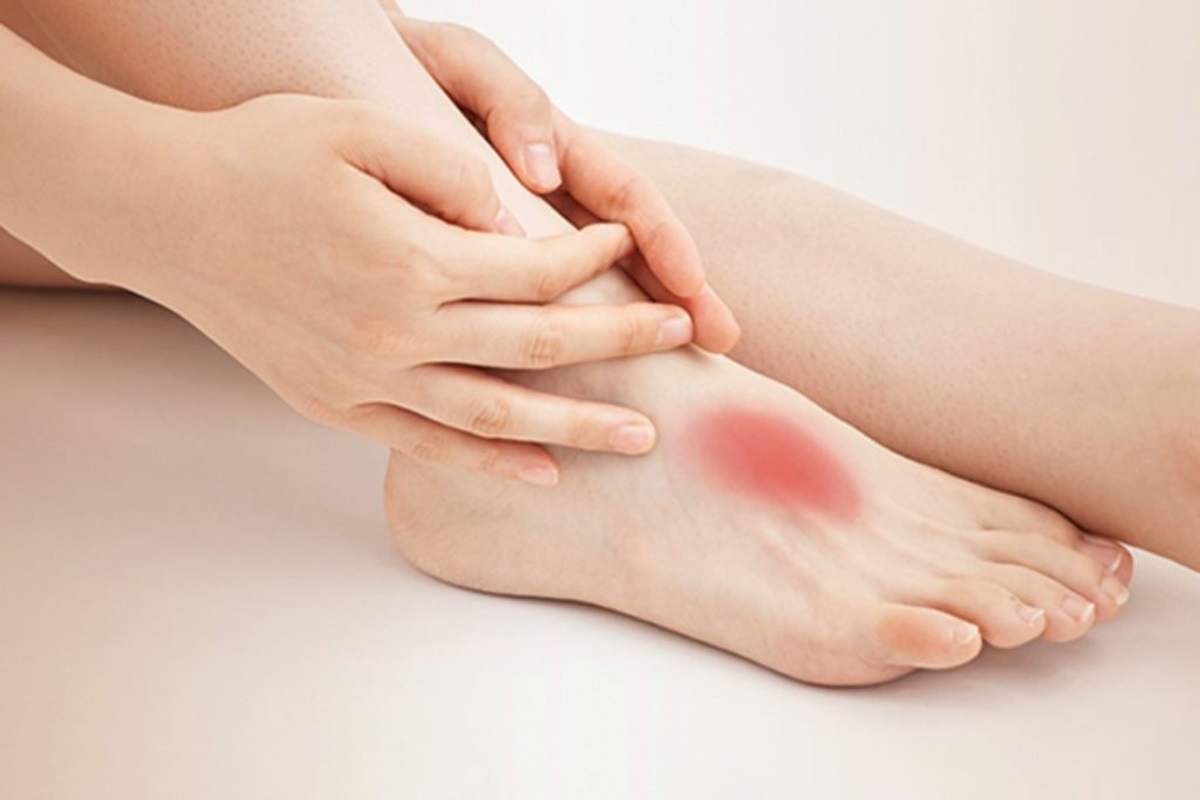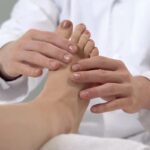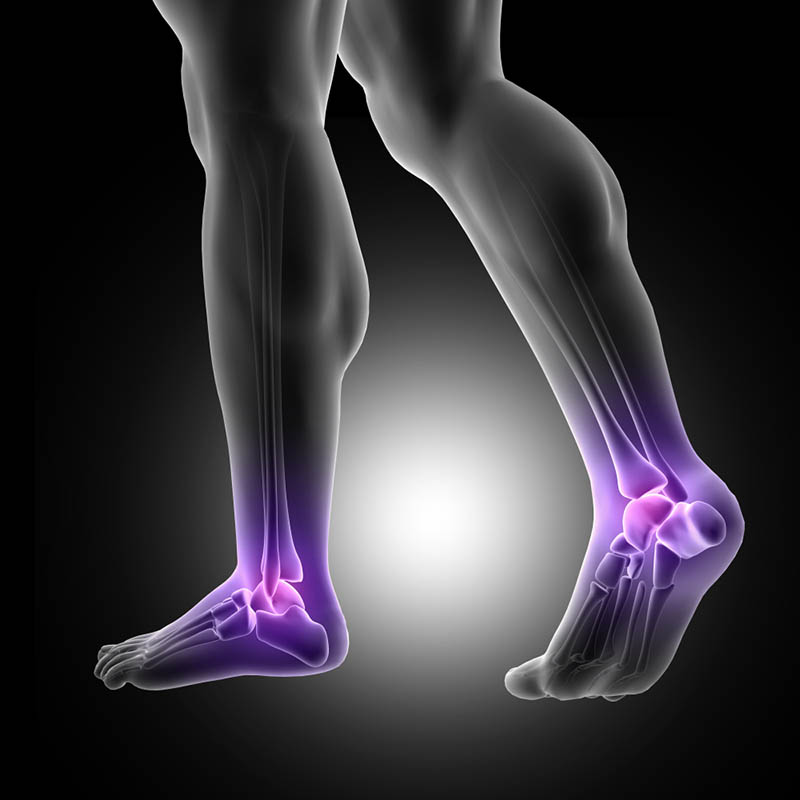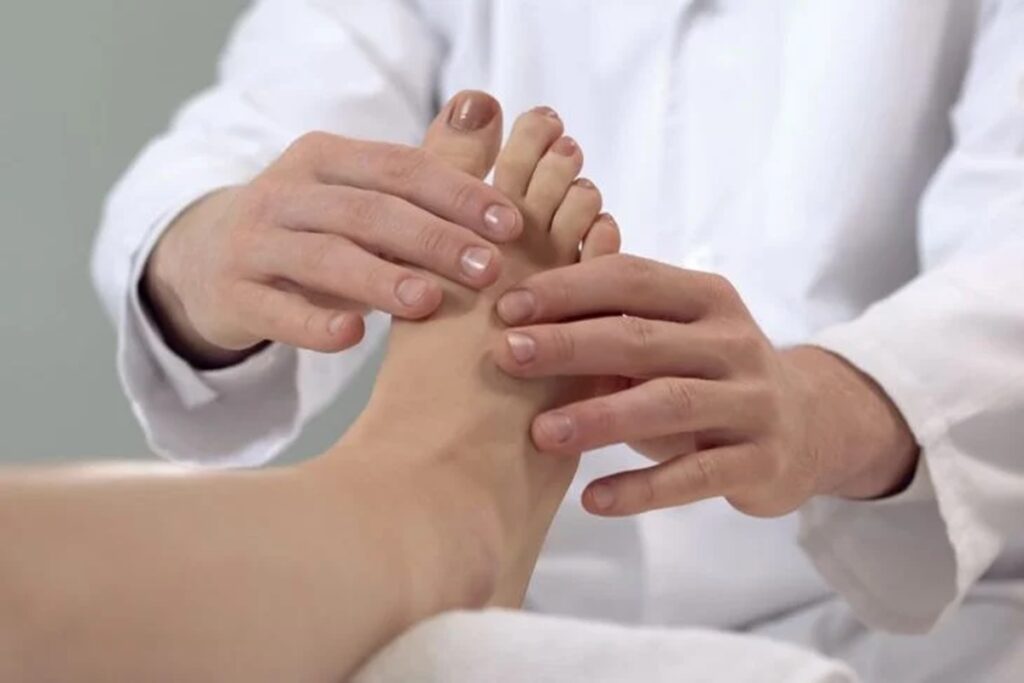Arthritis in the top of foot can have a significant impact on your ability to perform daily activities. The pain, stiffness, and discomfort in the midfoot or dorsal part of the foot can interfere with walking, standing, or even simple movements like climbing stairs. Left untreated, this condition can progressively worsen, affecting your overall quality …
Arthritis in the top of foot can have a significant impact on your ability to perform daily activities. The pain, stiffness, and discomfort in the midfoot or dorsal part of the foot can interfere with walking, standing, or even simple movements like climbing stairs. Left untreated, this condition can progressively worsen, affecting your overall quality of life. Understanding the causes of arthritis in the top of foot, recognizing the symptoms, and seeking timely arthritis in top of foot treatment is crucial for maintaining mobility.
Whether you’ve experienced a joint injury or have a family history of arthritis, it’s important to seek care from a foot and ankle doctor to prevent further damage to the foot joints. With the right foot arthritis treatment, you can manage your condition and regain mobility.
Understanding Arthritis in the Top of the Foot
Foot pain, especially in the context of arthritis, is a widespread health issue. Around 24% of adults experience foot problems, with the risk of developing these issues increasing as individuals age. Foot arthritis, in particular, becomes more common with age, affecting mobility and overall quality of life for many people. Understanding the causes, symptoms, and treatment options for arthritis in top of foot is critical for managing this condition and preventing further complications.
Arthritis that affects the top of the foot is a condition involving the joints in the midfoot or the tarsometatarsal joints. These joints are crucial for foot function, and when they become inflamed, pain and stiffness develop. Arthritis in this area can be particularly debilitating, limiting your range of motion and making simple tasks like walking or standing difficult.
What Is Midfoot and Dorsal Foot Arthritis?
Midfoot arthritis affects the joints in the middle of the foot, including the tarsometatarsal joints, which are key in the movement and support of the foot. Over time, wear and tear from cartilage damage can cause discomfort, leading to arthritis. The navicular-cuneiform joint, located at the top of the foot, is particularly vulnerable to arthritis due to its role in foot motion and flexibility. When these joints begin to degrade, they can result in painful bone spurs, decreased flexibility, and difficulty with weight-bearing activities.
Common Types: Osteoarthritis, Inflammatory & Post-Traumatic
There are three common types of arthritis that affect the top of the foot:
- Osteoarthritis: This wear-and-tear type of arthritis is caused by the gradual breakdown of cartilage that cushions the joints. It is often linked to aging and repetitive stress on the foot.
- Inflammatory arthritis: Conditions like rheumatoid arthritis or psoriatic arthritis cause inflammation in the joints, often resulting in swelling, pain, and tenderness. This type of arthritis can develop quickly and lead to deformity if left untreated.
- Post-traumatic arthritis: This arthritis develops after a joint injury such as a Lisfranc fracture or ankle sprain. The trauma can cause long-term joint damage and lead to arthritis years after the injury.
Rheumatoid arthritis is a systemic condition that goes beyond just the bones and joints. It can affect other tissues in the body, including the blood vessels, nerves, and tendons, leading to widespread damage. This multi-system involvement can make rheumatoid arthritis particularly challenging to manage, especially when it impacts the feet. Individuals with rheumatoid arthritis may experience additional symptoms such as fatigue, swelling, and joint deformities that affect mobility.
Contributing Factors: Flat Feet, Injury History, Systemic Conditions
Several factors contribute to arthritis in top of foot. Flat feet can change the alignment of the foot, putting additional stress on the joints and leading to arthritis over time. A history of foot fractures, such as a Lisfranc injury, can also make you more prone to developing arthritis in the affected joint. Additionally, systemic conditions like diabetes, rheumatoid arthritis, and obesity can exacerbate joint inflammation and accelerate the progression of arthritis.
Recognizing Symptoms
Recognizing the early signs of arthritis in top of foot can help you seek treatment before the condition worsens. Symptoms can range from mild discomfort to severe pain, depending on the stage of the disease. Here’s how to identify the key signs and know when to seek medical advice.
Typical Signs: Dorsal Pain, Morning Stiffness, Bone Spurs
Dorsal pain is one of the most common symptoms, which occurs along the top of the foot. The pain may be especially noticeable during physical activities or after long periods of rest. Morning stiffness is another key indicator, as arthritis in the foot can make it difficult to move the foot immediately after waking up. As arthritis progresses, you may also notice the formation of bone spurs, which are bony growths that develop on the joints, often causing grating or crunching noises when moving the foot.
When to Seek Medical Advice
If you experience persistent pain, difficulty walking, or if you notice deformities in the top of your foot, it’s time to consult with a foot and ankle doctor. Joint deformity, swelling, and tenderness in the top of the foot that doesn’t improve with home remedies require immediate medical attention. Early treatment can prevent further damage to the joints and help you avoid more invasive interventions later on.
Diagnosis by a Foot and Ankle Doctor
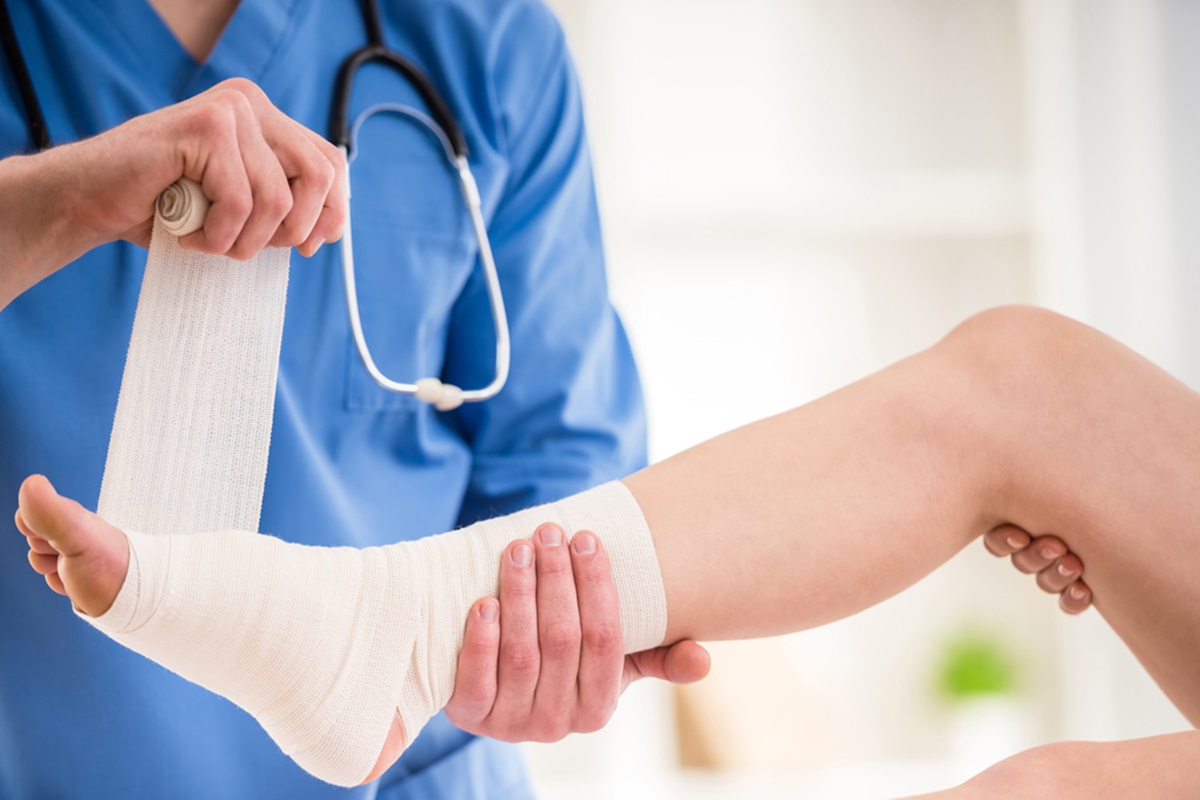
A proper diagnosis is essential to determine the underlying cause of arthritis in top of foot and to find the best treatment approach. Your foot and ankle doctor near me will conduct a comprehensive evaluation, including physical exams and diagnostic tests, to pinpoint the exact cause of your pain.
Physical Examination and Gait Analysis
Your foot and ankle doctor will assess your range of motion, joint alignment, and any tenderness or swelling around the affected area. Gait analysis will be performed to identify any abnormal walking patterns that may be contributing to the arthritis. This helps in understanding how your walking mechanics affect the joints and whether orthotics or physical therapy might be necessary.
Imaging and Laboratory Tests
To accurately diagnose arthritis, your doctor may use X-rays, MRI scans, or CT scans to examine the bones and cartilage. These imaging tests allow the doctor to assess joint damage, bone spurs, and cartilage degradation. Additionally, weight-bearing X-rays may be used to see how the joints respond under pressure, which is crucial for planning treatment. In some cases, blood tests may also be needed to rule out conditions like rheumatoid arthritis or gout.
Referral to a Foot and Ankle Doctor Near Me
If you’re suffering from symptoms of arthritis in top of foot, it’s important to find a foot and ankle doctor near me. A specialist can offer an accurate diagnosis, explain your treatment options, and create a customized plan to relieve your pain and restore mobility.
Non‑Surgical Treatment Options
For many patients, arthritis in top of foot treatment starts with non-surgical options that can effectively manage symptoms and slow the progression of the disease.
Medication and Joint Injections
Nonsteroidal anti-inflammatory drugs (NSAIDs) are commonly used to reduce pain and inflammation. For more advanced cases, corticosteroid injections can provide targeted relief by reducing inflammation directly in the joint. Viscosupplementation injections, which involve injecting a gel-like substance into the joint, can help lubricate the affected area and reduce friction, providing long-lasting relief.
Footwear Modifications and Custom Orthotics
Wearing the right shoes is essential in managing arthritis in top of foot. Shoes with stiff soles, rocker-bottom shoes, or shoes with carbon-fiber inserts can reduce stress on the joints and provide relief. Custom orthotics can also help by providing better foot alignment, supporting the arch, and distributing pressure more evenly across the foot, which alleviates pain and prevents further joint damage.
Physical Therapy and Lifestyle Adjustments
Physical therapy plays a critical role in foot arthritis treatment. Strengthening exercises and stretching exercises can restore range of motion, improve flexibility, and reduce the pain caused by stiffness and joint degeneration. In addition, adopting an exercise plan focused on low-impact activities like swimming or cycling can help maintain joint function without putting excessive strain on the foot.
Surgical Treatment When Needed
If conservative treatments fail, surgery may be necessary to improve joint function and alleviate persistent pain.
Midfoot Fusion and Osteophyte Removal
For severe cases of midfoot arthritis, midfoot fusion may be performed to permanently join the bones in the affected area. Osteophyte removal, or removing bone spurs, is also commonly done to reduce pain and improve joint mobility.
Procedure Selection, Recovery Timeline & Outcomes
Your foot and ankle doctor will discuss the surgical options available and help you choose the procedure that best suits your needs. Midfoot fusion and osteophyte removal require significant recovery time, but most patients experience pain relief and improved function in the long term. During recovery, physical therapy is often recommended to aid in rehabilitation and restore normal movement patterns.
How Wisconsin Foot & Ankle Clinic Can Help
At Wisconsin Foot & Ankle Clinic, we specialize in treating arthritis in top of foot with both conservative and surgical options.
Expert Diagnosis from a Fellowship‑Trained Surgeon
Dr. Donald T. McDonald has extensive experience in diagnosing and treating all types of foot arthritis, using advanced imaging tools and techniques to accurately assess your condition.
Personalized Conservative Treatment Plans
We offer custom orthotics, joint injections, and physical therapy tailored to your unique needs, with a focus on providing long-term relief from arthritis in top of foot.
Advanced Surgical Care at Our Clinic
If surgery is necessary, we offer minimally invasive options such as ankle arthroscopy and midfoot fusion that aim to restore mobility and alleviate pain with a quick recovery time.
Patient-Centered Approach & Easy Appointment Booking
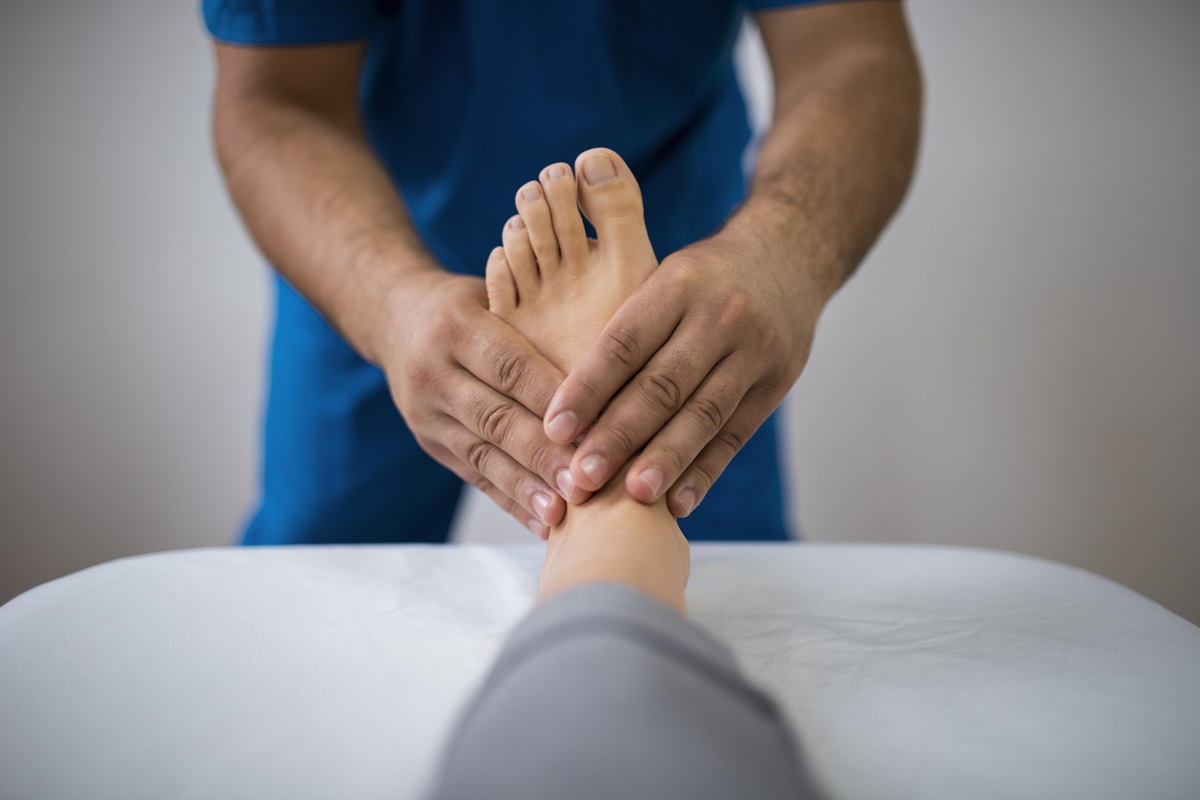
We pride ourselves on providing personalized care in a patient-focused setting. Our clinic offers flexible scheduling and easy access to top-quality care, with foot and ankle doctors near me to help you recover effectively.
Preventing Future Arthritis Progression
Preventing the progression of arthritis in top of foot is crucial to maintaining your quality of life and reducing the need for future treatments.
Choosing Supportive Footwear and Orthotics
Supportive footwear with proper arch support, shock absorption, and custom orthotics can significantly reduce mechanical stress on the foot and prevent further joint degeneration.
Safe Activity Levels and Regular Mobility Work
Engage in low-impact activities such as swimming or cycling, and follow a stretching routine to maintain flexibility and reduce joint stiffness. Strengthening exercises will help prevent further damage to the foot joints and keep you active without causing additional pain.
Routine Follow-ups with Your Specialist
Regular follow-ups with a foot and ankle doctor near me are essential to monitor the progression of arthritis and adjust treatment as needed.
Conclusion
Arthritis in top of foot can significantly affect your daily life, but with early diagnosis and the right treatment, you can manage symptoms and restore function. Whether you choose Conservative Therapy or need more advanced options, Wisconsin Foot & Ankle Clinic offers comprehensive care to meet your needs and help you live an active, pain-free life.
FAQs
How do you treat arthritis on the top of your foot?
Arthritis in top of foot is treated with NSAIDs, corticosteroid injections, custom orthotics, and physical therapy. If needed, surgical options like midfoot fusion can provide relief.
What does arthritis look like on top of the foot?
Arthritis on top of the foot often presents as dorsal pain, bone spurs, and stiffness. You may also notice swelling, tenderness, and reduced flexibility in the affected joints.
Does walking help foot arthritis?
Walking can help maintain joint function and muscle strength, but it’s important to modify activity levels and wear supportive footwear to avoid exacerbating symptoms.


